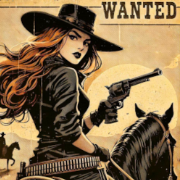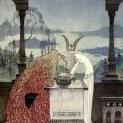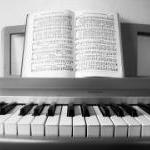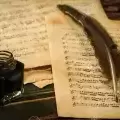Leaderboard
Popular Content
Showing content with the highest reputation on 02/24/2023 in all areas
-
Hello everyone! This is a bit different from what I have shared so far. In fact, it is the transcription almost not at all elaborated of a piano piece improvised many years ago. My wife says it makes her think of the dawn in africa, so I'll call it "Dawn" even tho in my files it's a "Quintetto." 🙂 For the whole piece, the beat should stay the same, even though the time changes quite often. There is not much interplay between the different instruments, in fact I picked them only for color. Suggestions and critiques always superwelcome. Maybe I'll try and imitate @Henry Ng Tsz Kiu and record and post the piano version if I'm not too rusty.Quintetto clean - Full Score.pdf2 points
-
This is a piece I was inspired to write from a trip I took pre-Covid to Europe. I spent three weeks traveling by train, including on Czech rail aka České Dráhy. I wanted to capture the feel of being on a train, zipping through the countryside and cities.1 point
-
A loop I composed as a shop theme for a Paranormal Investigator video game. Let me know what you think!1 point
-
Hello! I recently got obsessed with this prelude by scriabin: So I composed a piece trying to work with those same sweet dissonances. It sounds ok to me, but I got some backlash because of it's sonority, so I thought maybe my treatment of suspensions and dissonances here was very poorly done. I would love to hear how it sounds for you guys! Thanks in advance for your attention.1 point
-
Hello Guys, I participated on a competition. The participants got this task below. What do you think about my entry? Thank you for your comments!1 point
-
Hi @Alex Weidmann, That alto flute really gives the mood of Japanese or orientic feeling! That new material in 3:10 is very Japanese or Middle Eastern with that augmented 2nd and I love it! I love that piano passages in b.91 but will you afraid that it will be too "functional" and tonal in its harmony or fine? I don't know whether you want to have a contrast of modality here! It's definitely beautiful, however! Henry1 point
-
Oh, and I used celesta not glockenspiel, but I also always confused the two instruments. 🙂 Their sound is very similar in the mix.1 point
-
bravo for this great melodic richness. the accompaniment is also very well done giving this impression of mobility and also of a rise in tension before the accomplishment of the last part. I've often found myself quite in trouble writing for the harp because it's always very tricky to properly measure what is possible or not depending on the pedals. I would have avoided asking myself these questions by writing a harped harmonic part for him. but I admit that in the demo the lining sounds pretty good (it will also require a very precise tuning of the piano and the harp to avoid beats)1 point
-
Good morning, I'm glad you like it And your comment makes me extremely happy. about the title "noctune" I think it's a great idea and you should keep it preciously. congratulations for this invention (which however works less well in French since tune does not mean sound but money in slang 🙃1 point
-
I like that a lot, I'm actually going to move it up to A flat major so it'll be in an easier range, and parts will be in a better range as well.1 point
-
Dear @olivercomposer, You alternate between E minor and C minor throughout the piece to create the lost feeling. The transformation to G major and Eb major after 1'31 is a good contrast, and the use of glockenspiel(?) is a good use of the percussive element. I just don't know why it's not a wind instrument to express the bird call in the requirement. The requirement is quite strange itself since your music has to be both afraid of being lost and wonder at the same time, and it's quite difficult to achieve but I think you handle it well! The hopeful section is quite good! If you can connect the opening section with the latter using motivic coherence and transformation it will be even better! I think you can have a gradual diminuendo at the end to show the "peaceful acceptance before slowly fading away", probably having the instruments reduced like the ending of Haydn's Farewell Symphony and have the glockenspiel as the last melodic instrument. Thanks for sharing! Henry1 point
-
Hi @Giacomo925 , Love to see your new post here! I like the harmonic language in it and I think you have learnt from the impressionistic composers with the harmonic language and the fluidity of the music! I think it does depict the Dawn you would like to represent! I think the chamber writing can be more varied here. The combination of instruments is very good here with four different timbres: however it's always two lines with doublings. This will reduce the individuality of each instrument and their timbre cannot be displayed here independently. Also the sound will be less rich. Probably you should consider adding more new countermelodies and acconpaniments instead of two voices throughout! I knoe that it's the elaborated version of a piano piece, so probably you should add more lines to the music and make the music more idiomatically suited to the instruments! E.g. the wide leap btw b.89 to 90 in piano left hand will be too wide! The flute is never in its middle to high range to shie its own colour. I can barely play the piano right hand's interval of tenth in b.73, but adding an appreggios with be great there, also it can be played more easily! Thanks for sharing! I quite enjoy this one! Henry1 point
-
I love this! The atmosphere is absolutely wonderful, I agree that the clarinet is just perfect, and the singing fits wonderfully. Just a curiosity: is the title "Nocturne" or "Noctune"? The latter also works 🙂 The darkness is deep, but not overwhelming and the diversity of the instruments used so artfully balanced. It's really a pleasure to listen to, merci!1 point
-
Hey @GospelPiano12, Your notation is perfectly right! You sing it perfectly too as the key is right in Db major! The harmonization seems great as well! Henry1 point
-
Dear @gmm, I thoroughly enjoy this piece! I am afraid my review will be kind of messy though! I really won't comment much on your orchestration since it's perfect for me. I want to cry in many moments for its grandness, e.g. in around 5:50 and 15:00! I am really thankful that you post this here since it's an honour for us. The opening motive provides good chance to use quintal harmony! Just inside the B section there are many motives apart from the motive 2 with the cello D-Bb-C-A and harp A-Bb-E-F#-A. I love the saturation of motive here! I love the outburst in around 3:10! I like that beguiling sound in around 4:10. Very grand in 5:10 using the opening A motive and with the trumpet it really sounds like John Williams here! You like using the octatonic modulation a lot. I freakingly love the C section!!!!! Very Bartokian and Stranvinskian here with the punching rhythm! 9:32 really reminds me the middle section of the Sacrificial Dance of Stravinsky's Rite of Spring! The D section is utterly beautiful as well and the climax in around 15:00 is magnanimous. The opening section especially with the uprising fifth really reminds me the opening of Thus Spoke Zarathustra. In 4:13 it reminds me of the augmented chord in Mahler's Fourth, the Scherzo. That passage starting from 9:38 reminds me the middle section of the Sacrificial Dance of Stravinsky's Rite of Spring. The tone clash, irregular meter, rhythm, accents all remind me of the Stravinskian passage. Very well developed and very noticeable throughout the movement! As a standalone piece it will be a beautiful piece with different pictures. I think it's quite descriptive here rather than narrative for a first movement of a grand symphony, and I am not sure your overall picture of this symphony is. I guess it will be quite Mahlerian with this scope, and it's quite typical for Mahler to have numerous of ideas in the first movement to be developed later, so it depends. For me my favourite part is the introductions of all the themes particularly the C section. I also like your combination of Bassoon and Piano in around 6:40. My least favourite part is the return of the A section 15:50 and 21:37 since it's quite similar to initial appearance. Also after the grandeur in 15:00 I really don't like how it falls back to beguiling atmosphere again! But it can be really effective as sparks of light appear and disappear, as in the second movement of Mahler's Fifth. Section D is both my favourite and least favourite part here. It's utterly beautiful and I utterly enjoy it, but formally its beauty hinders the progress of the movement for me especially for a first movement. I would love to have a more forward going section! I think it's effective as a rondo form but a bit too long for me. It links with the descriptive nature of the movement. Your overall form is A-B-A-C-A-D-A-B-A-coda, I feel like there are many beautiful portraits here but the linkage between them is not the strongest even with the coherence of motive. But since it's introductory in the character I think the arrangement is fine if the later movements can successfully resolve the uneasiness throughout the movement with strong coherence. Linked with the Mahlerian conception of a Symphony this will be perfectly fine. I want the C section to feature more since it's really brilliant! It's kind of compensated at the coda but I want more!!!! I would like to know if the movement has some sort of programme or not, since this will better explain the usage of rondo form and how it will be linked with the later movements! I sort of comment more on the formal issue of the movement, but it is such an enjoyable piece of music. Bravo on this!! Henry1 point
-
Yo yo yo Thanks man, I was using Cubase at the time, but I've since upgraded. Youtube in the works 🙂1 point
-
1 point
-
@PeterthePapercomPoser Have in mind that all these figures are open to interpretation, since they are taken from the speech and/or written discourse.This is just a first little example of what can be done with rhetorics in music. Being that, an example, I don't make it long. When I write pieces with "pedagogic" purposes, I make them short, focusing on the concepts. Surely the piece would be different and richer if it would have been written with "artistic" intention. On the other hand, here there are concise definitions of the figures, I will explain them better in the blog.1 point
-
Thanks, guys! Man, I wish I was good enough that people would plagiarize me. No, there are a few reasons these pieces are shorter 1. I personally don't feel that instrumental music generally needs to be very long to begin with. 2. Most new listeners don't want to listen to someone they don't even know's 5-minute epic. If they see it's very long, they're not likely to listen to it all the way through. 3. Much of it is into the portfolio for potential clients, and when considering hiring you, they really want tracks that get straight to the point. 4. Probably the biggest reason is time investment in MIDI mockups.1 point
-
1 point








